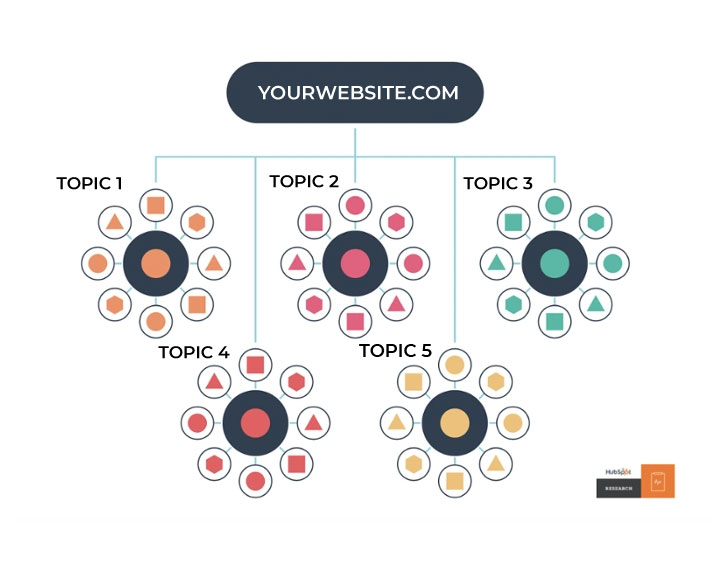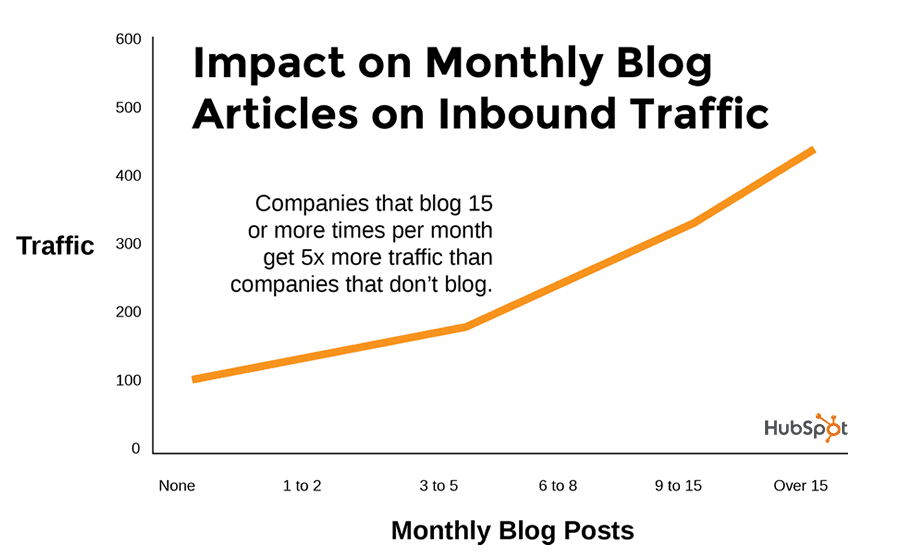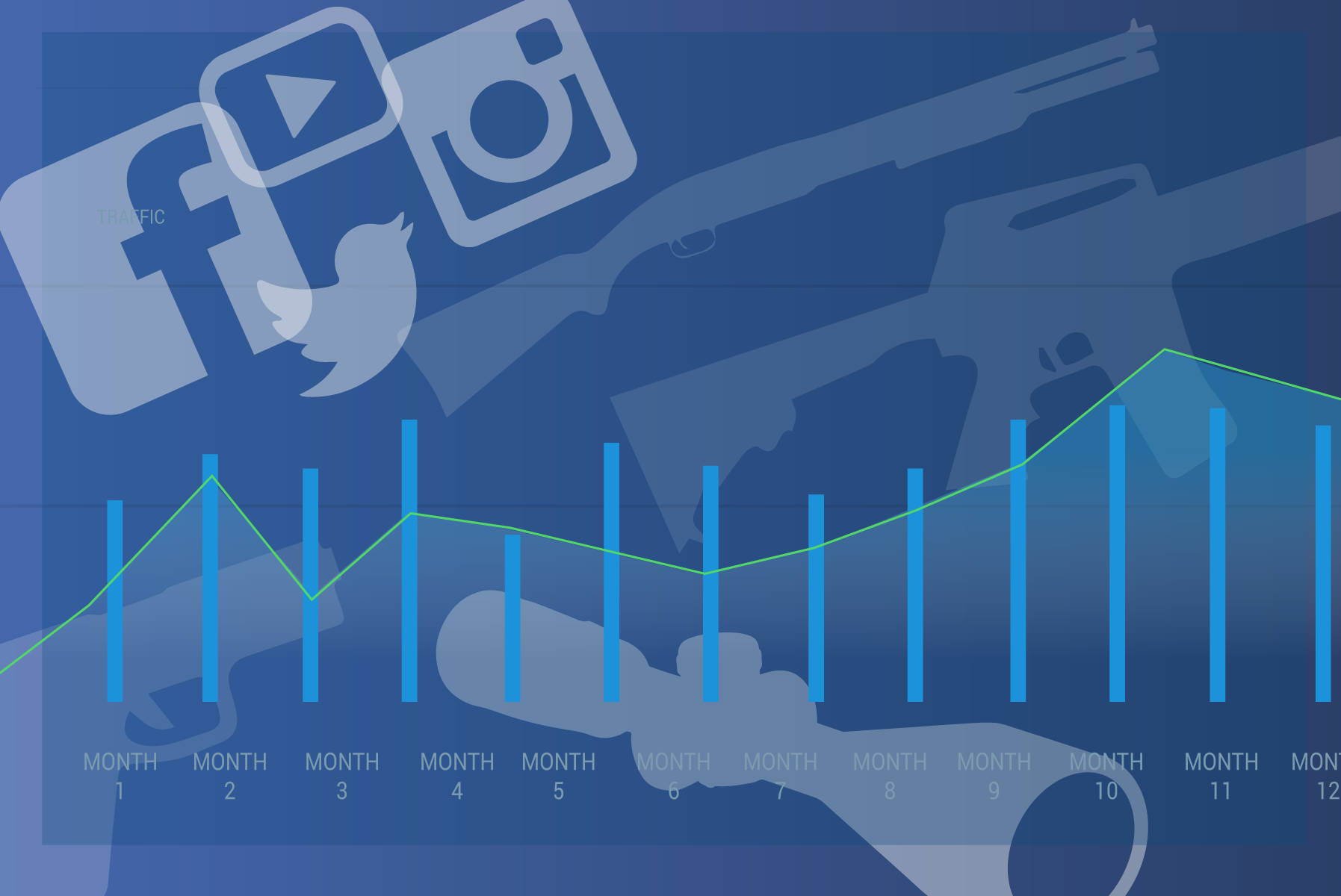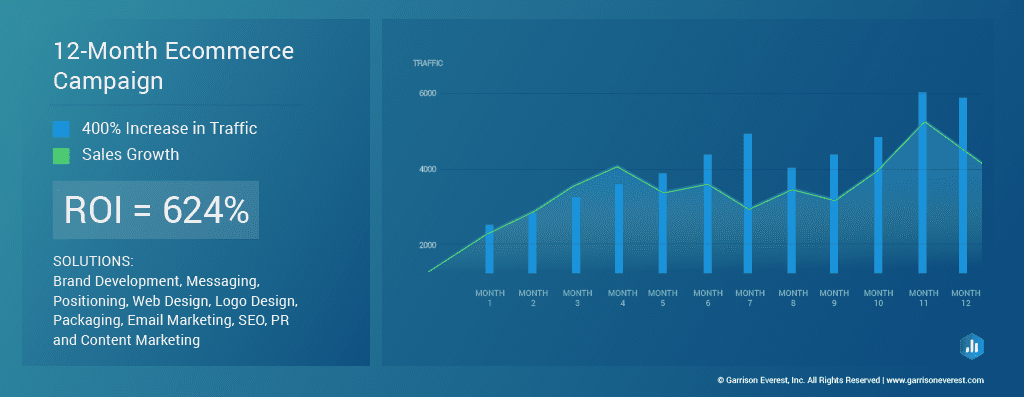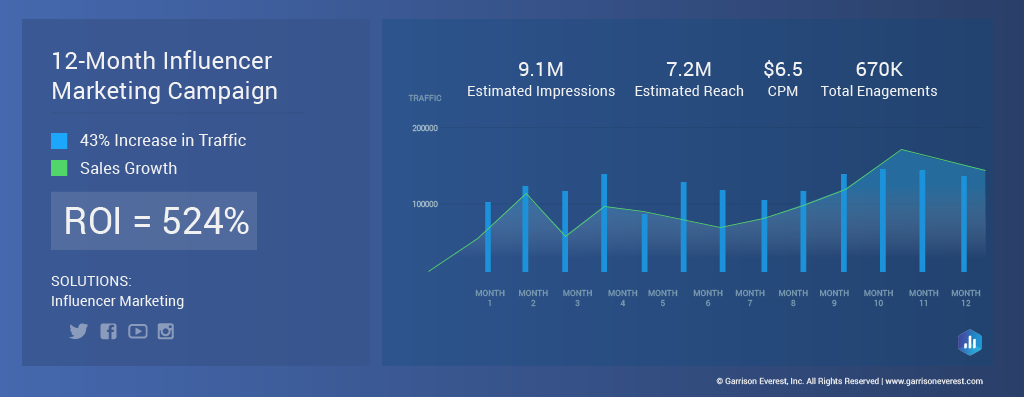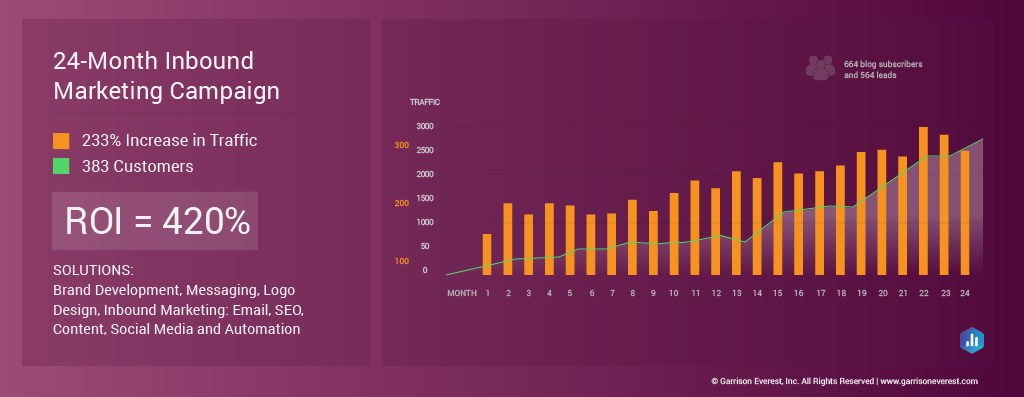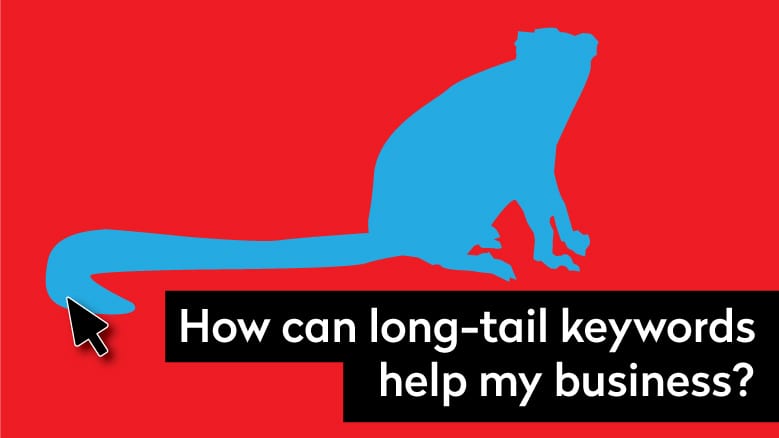
You most likely know that blogging for your hunting, outdoor or firearms company is a must do when trying to rank on search engines like Google, but I see so many companies still getting it wrong.
For those who take the time and energy to create content in the form of blogs, videos and podcasts—there exists many benefits and clearly defined advantages for your outdoor industry marketing program. The most important being outdoor industry SEO.
What is SEO?
SEO stands for “search engine optimization.” In simple terms, SEO means the process of improving your website to increase its visibility in Google, Microsoft Bing, and other search engines whenever people search for:
- Products you sell.
- Services you provide.
- Information on topics in which you have deep expertise and/or experience.
The better visibility your pages have in search results, the more likely you are to be found and clicked on. Ultimately, the goal of search engine optimization is to help attract website visitors who will become customers, clients or an audience that keeps coming back. (Source: SEL)
What is Content Marketing?
Content marketing is a strategic marketing approach focused on creating and distributing valuable, relevant, and consistent content to attract and retain a clearly defined audience — and, ultimately, to drive profitable customer action.
Instead of pitching products or services, content marketing provides relevant and useful content to your prospects and customers to help them solve issues in their work (B2B content) or personal lives (B2C content). (Source: Content Marketing Institute)
Call it content marketing or blogging—blogs have been shown to increase SEO website traffic by 55% (Source: Hubspot). Done consistently, blogging will compound over time into more traffic, more leads and more sales through your website. Blogging is one of the key components in an internet or content marketing strategy. Blogs power your search engine optimization and social media efforts to greater heights. In a time of digital transformation, embracing content and SEO will have an immense impact on your online sales.
If you’re the type of business owner or marketer who sees the advantages of content creation in the form of blogging and are committed to thought leadership, driving website traffic and to building your brand, this post will help you become a more effective blog writer in the hunting, outdoor and firearms industry.
1. Outdoor industry SEO starts with your audience
A lot of times, you may be blogging just for the sake of blogging. But this is where a lot of people go wrong. There is a methodology to blogging. For starters, you must understand your audience at the granular level to make your writing efforts pay off. A great way to get inside the heads of your prospects is to interview your current customers. Ask them why they value your brand, what keeps them up at night and what their biggest challenges are. For example:
- How to call in a hung up turkey.
- What is the best AR15 for home defense?
- How to become a better sports clay shooter.
- How to field dress your game quicker.
- What are cheaper thermal vision alternatives?
- Best places in Montana to look for sheds.
- What level of fitness do I need to hunt bighorn sheep?
By asking the right questions, you will be able to write the right blogs that capture your audience’s attention.
SEO PRO TIP: Write for your customers, not search engines. And do not use copy/paste blog articles from ChatGPT.
2. Pick Outdoor Industry SEO topics based on your keywords
If you’re blogging on topics that don’t include your keywords you’re camouflaging your blogs. Keywords drive traffic to your website and show up in search engines where your prospective customers are. Pick topics that your customers are searching for. To find out what keywords you should be blogging on, you’ll need to take a closer look at your analytics. You may even consider using a paid keyword tool service like Moz, Wordstream, or HubSpot’s Topic Cluster Tool or utilize your Google Adwords tool.
SEO PRO TIP: Don’t stuff keywords into your copy.
3. Use the Topic Pillar Strategy to optimize your Outdoor Industry SEO efforts
A topic pillar is a strategic content framework used in search engine optimization (SEO) to enhance a website’s visibility and authority in a specific subject area. It consists of a comprehensive, in-depth piece of content known as the “pillar” content, which serves as the central resource for a particular topic.
Surrounding this pillar content are related subtopics, known as “cluster” content, which delve into specific aspects of the main topic in greater detail. This hierarchical structure not only organizes and categorizes information effectively but also signals to search engines that your website offers comprehensive coverage on a subject. As a result, search engines are more likely to recognize your website as an authority in the field, leading to improved rankings and greater organic traffic, making topic pillars an invaluable strategy for SEO.
SEO PRO TIP: Don’t randomly blog for the sake of blogging without a topic cluster strategy.
4. Outdoor Industry SEO should teach them something
Just like this blog is attempting to teach you something—your blog should attempt the same. Like the examples shown above, the first and best way to approach a blog is to answer the questions you hear most from your customers. Compose a list, perhaps starting with your FAQS and turn them into 700-1000-word blog posts.
SEO PRO TIP: Blog posts less than 300 words will have a difficult time ranking. Aim to write articles 700 words or more.
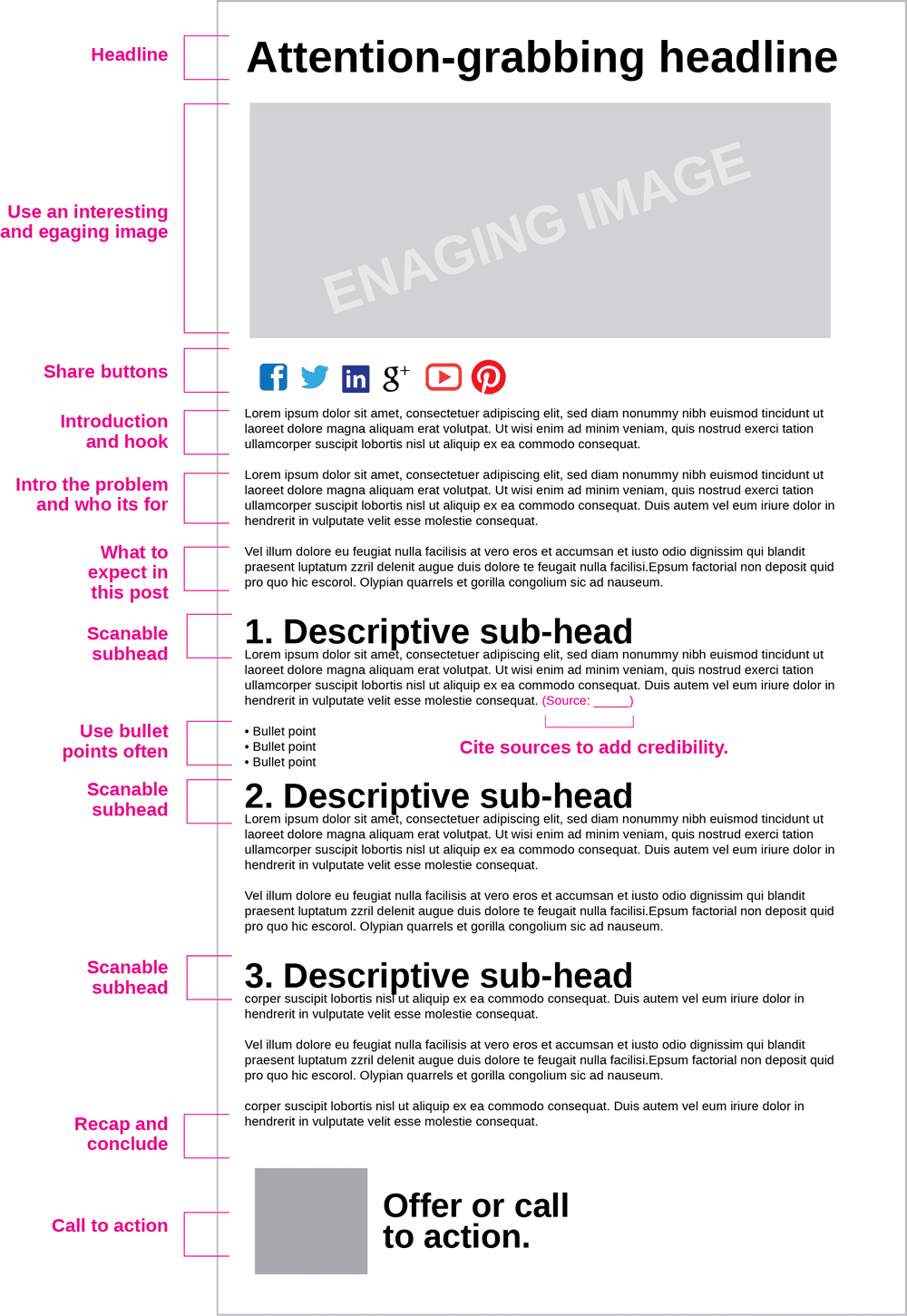 5. Format your content to rank
5. Format your content to rank
Formatting is another factor you must consider. Your readers will typically scan topics and headlines before committing to reading your post. It’s kind of like channel surfing. To make the most of the one shot you have to grab your reader’s attention, your blog posts should take on a format like this to allow for easy scanning:
- Attention-grabbing headline
- Engaging image
- Share buttons
- Introduction and hook
- Introduce the problem you are solving and who the post is for
- Tell the reader what to expect
- Cite your sources for credibility
- Number your sub-heads
- End with a recap and conclusion
- Use a call to action to generate a lead or sale
By formatting your blog properly, you’ll increase the likelihood of getting it read.
SEO PRO TIP: Don’t forget to add your keyword in your H1, H2’s and alt images in your blog post.
6. Ignite your Outdoor Industry SEO
Sharing is considered the “holy grail” in social media. It’s one thing to “like” or “favorite” a post, but a share has the potential to drive traffic and build brand awareness exponentially. When a person shares your content, it says something about them to their friends and followers.
According to Mark Schaefer’s new book, the Content Code, people share content on the basis of making themselves look smarter or to communicate something about their interests and personalities. Sharing “ignites” your content that allows your brand to penetrate into new audience groups.
Make sure to add share buttons at the top of your posts and make sure the blog data automatically populates is the first step in getting your post shared.
SEO PRO TIP: Don’t forget to ignite your content by mentioning others on social media who you cited in your articles.
7. Consistency is the key in Outdoor Industry SEO
If you start a blog, you must commit to blogging on a regular and consistent basis. By starting out strong and then getting sidetracked in 3-4 months, will hinder your efforts and leave your followers hanging. They’ll forget about you and eventually unsubscribe or tune out. If you’re going to commit to blogging, commit to it and stick with it. You can start out by committing to once a month and build up from there. The more you blog—statistics show—the more traffic you get.
SEO TIP: Aim to blog every day and release 3-5 new blogs per month and be consistent.
8. End with a call to action
At the end of every blog post, you should end with a call to action. Whether it’s a downloadable offer, a video or even a call to purchase one of your products—make sure to capitalize on the momentum and interest you just created with your reader once they get to the bottom of your post.
In ending, when writing a blog post, start by knowing your audience, teach them something, write articles based on your keywords, format, use the topic cluster model, make it easy to share, be consistent and end with a call to action.
By including these points in your next hunting, outdoor or firearms blog post, you’ll start seeing lower bounce rates, increased traffic, and more subscribers, shares, likes and favorites.



